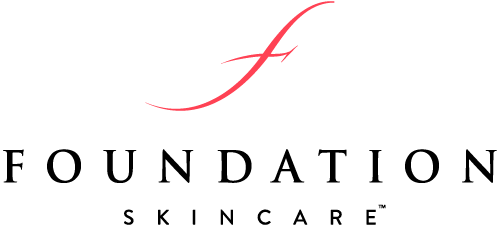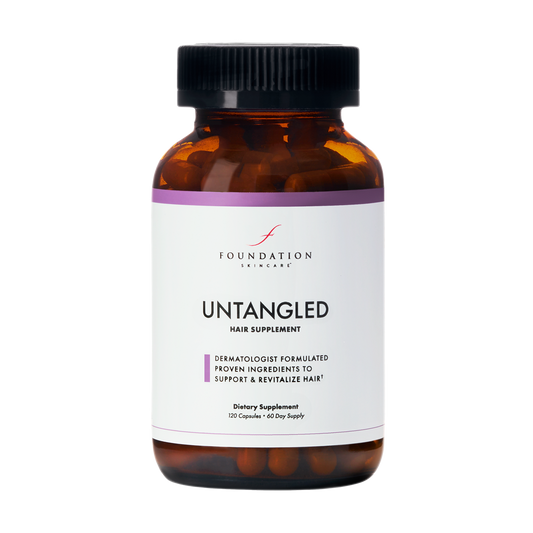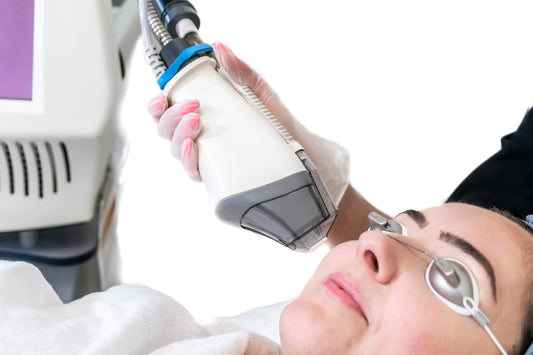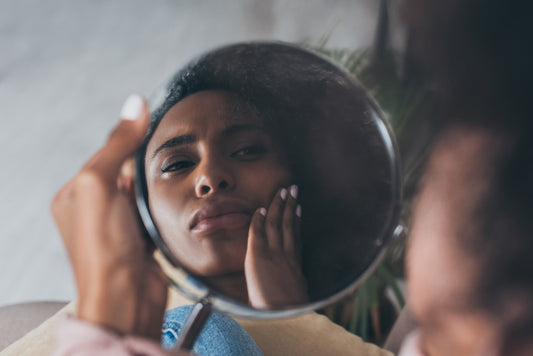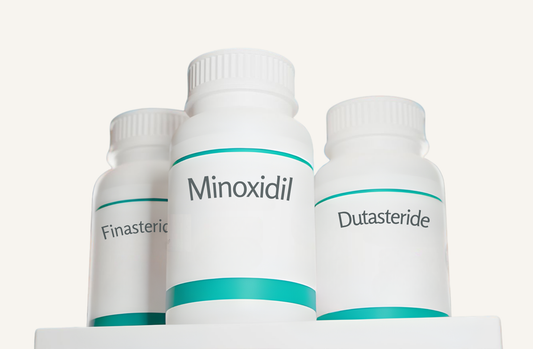Baldness, which affects an estimated 50 million men and 30 million women in America1, occurs when your hair follicles shrink and stop growing new hair. This often occurs due to genetic factors, or it may be a result of certain medical conditions, hormonal changes, or excessive hair treatments.
Depending on what’s causing your hair loss, signs of balding may appear gradually or come on suddenly. Read on to find out how to tell if you’re going bald and what you can do to treat thinning hair.
1. Excessive Hair Loss
One of the most obvious signs of impending baldness is excessive hair loss, but when it happens gradually, it can be easy to miss.
After all, every day, you lose between 50 and 100 hairs2. But you probably don’t notice because A.) Humans have about 90,000-150,000 hairs on their head3, and B.) Your hair is continually growing in cycles to replenish itself.
When you start to lose significantly more hairs every day and they stop replenishing, it may be time to look into hair loss treatments and explore why you may be experiencing this type of hair loss.
In some cases, the hair loss is temporary and known as telogen effluvium. According to the American Academy of Dermatology Association, some potential contributors to telogen effluvium include rapid weight loss, giving birth, stress, and high fever. Excessive hair loss may also be associated with medical conditions like diabetes and lupus. By resolving or treating these underlying conditions, hair growth should recommence.
2. Hairline Receding
A receding hairline is one of the most common features of male pattern baldness. It is also one of the first symptoms. About 25 percent of men aged 40 to 55 have this kind of hairline4. It is characterized by thinning or loss of hair on the scalp, particularly at the front and top of the scalp, beginning at the temple. This may take on an M shape or you may just notice more forehead than usual.
A receding hairline is typically hereditary or related to aging. It can also be related to the androgen hormone dihydrotestosterone, or DHT, which binds to receptors in the scalp and shrinks the follicle. Another cause of a receding hairline is frontal fibrosing alopecia5, a specific type of hair loss that destroys the hair follicles.
3. Thinning Temples
Baldness may also begin with hair thinning at the temples, the area of the head between the forehead and the ear. It is related to male pattern baldness and may eventually lead to a receding hairline and that classic M shape.
Though hair thinning is commonly associated with aging, some men begin to develop this form of hair loss in their teens or early twenties6. This may be the result of increased levels of androgen within the hair follicles, which contribute to a shorter hair cycle, finer hair, and slower growth. This type of hair loss, referred to as androgenetic alopecia, can also cause female pattern baldness, though less commonly.
4. Bald On Top or Back of Head
Bald patches appearing on the top (crown) or back of head may not be noticeable, but it’s another common symptom of pattern hair loss. It typically follows the earlier signs of a receding hairline or hair thinning at the temples.
However, these patches may also be a sign of alopecia areata, an autoimmune disease in which the immune system attacks the hair follicles. It can affect any area of the body, from the eyebrows and legs to the scalp. Like pattern hair loss, alopecia areata tends to affect those who have family members with the condition. The disorder may also more commonly affect those with such skin conditions as atopic dermatitis and vitiligo, as well as those with thyroid disease. If alopecia areata is the reason you are experiencing this type of hair loss, taking early action with corticosteroids and targeted serums and supplements can help promote new growth.
UnTangled Hair Supplement
• Reduces shedding & thinning
• Strengthens hair follicles
5. Widening Scalp
A widening scalp may look like your hair’s part line is expanding, which is typically associated with female pattern hair loss. As the scalp widens, it may come to resemble a Christmas tree pattern. The hair loss may only affect the top or crown of the scalp, while the hairline remains unaffected. If the cause of the hair loss is increased androgens, you may notice that while your hair is thinner on your head, your facial hair is coarser.
Though female pattern baldness typically affects women after age 657, it can also occur earlier. Early intervention is highly recommended to slow its progression.
How To Treat Hair Loss
If you are noticing any of the above symptoms related to baldness, there are a number of actions you can take to reduce hair loss and encourage new hair growth. From limiting your use of hot tools and excessive hair treatments to taking hair growth supplements, find out what you can start doing today to address your condition.
Limit Use of Hot Tools
Hot tools like curling irons, flat irons, and blow dryers are common fixtures in the home, but they may be doing more harm than good. The same can be said for hot-oil hair treatments and perms. Not only can such tools and treatments cause hair breakage, but they can make it harder for hair to grow back.
You should also be wary of excessive hairstyling or hairstyles that pull your hair tight, such as pigtails or cornrows, which can cause a type of hair loss called traction alopecia. To encourage new growth or slow the progression of hair loss, limit your use of hot hair tools and avoid tugging and pulling when combing your hair.
Take a Hair Growth Supplement & Serum
Taking a hair growth supplement and using a targeted serum like those found in the UnTangled Essentials Kit can help stimulate, accelerate, and repair a stagnant hair growth cycle from the inside and out. While the Foundation Skincare UnTangled Hair Supplement provides the building blocks your body needs to revive the hair growth cycle and increase keratin production, the Foundation Skincare Hair Serum stimulates stem cells to promote growth, while also nourishing the cuticles and follicles to prevent future loss.
This powerful hair growth duo is most effective when taken at the first signs of balding and hair thinning, and you can also maximize your efforts by making healthy lifestyle changes like following a nutritious diet and managing your stress levels.
Patients using this combination have shown improvement in as little as 30 days, and notice visibly thicker and fuller hair within 90 days without the initial shedding associated with medical treatments like Minoxidil, the active ingredient in the product Rogaine®.
Take Your Vitamins & Minerals
Following a well-rounded diet is one of the most important things you can do to ensure your body is getting the nutrients it needs to stay healthy. Your hair relies on essential vitamins like Vitamin A, Vitamin C, and B vitamins to support the hair cycle along with minerals like iron and selenium, and zinc. If your diet is not as varied, or you simply want to be sure you’re not leaving any gaps, supplements can help.
The Foundation Skincare UnTangled Hair Supplement offers a custom blend of vitamins, minerals, herbs, and acids proven to support hair growth and minimize hair loss. Along with the vitamins and minerals listed above, the supplement also contains vitamin D-3, which is often difficult to obtain through your diet. Other ingredients proven to reduce hair loss are Horsetail Extract, which promotes hair growth, Saw Palmetto, which inhibits the enzyme responsible for pattern hair loss, and marine collagen, which is rich in essential amino acids that trigger our body’s own natural production of collagen.
Be Consistent with Scalp Massages
According to a 2019 study8, people with alopecia who got daily scalp massages for 11 to 20 minutes a day for almost six months experienced a boost in hair regrowth. Nearly 70 percent of participants reported less hair loss or more hair regrowth. This may be attributed to increased blood flow to the scalp and stretching of human dermal papilla cells.
Even more, scalp massages are relaxing and may reduce the stress hormone cortisol, inadvertently preventing hair loss and slowing its progression. Pairing your scalp massage with the Foundation Skincare Hair Serum is an even more powerful way to improve hair fullness, strength, and health.
Keep Up a Healthy Diet
As we said above, following a well-rounded, healthy diet is a great way to support hair growth. Some of the best documented foods9 for your hair include:
- Eggs: Great source of protein and biotin
- Berries: Full of antioxidants
- Leafy greens: High source of iron
- Fatty fish: Contains protein, selenium, vitamin D3, and B vitamins
- Nuts: High in B vitamins, zinc, and fatty acids
- Citrus fruits: Great for getting your vitamin C
- Meat: Rich in the protein your follicles need to repair hair follicles
Noticing early signs of balding can be worrying, but being proactive makes a significant difference. Seeing your dermatologist will help you rule out any specific conditions that may be causing your hair loss and devise a plan that works best for you. Adding supplements and serums can support whatever plan you decide to take as well as prevent future loss.
Whatever you do, try not to stress about the situation, as it will only make matters worse.
Find out more about what might be causing your hair loss in the FS Journal.
References:
-
https://www.pennmedicine.org/news/news-releases/2017/june/retailers-charging-women-more-than-men-for-common-hair-loss-medication
-
https://www.aad.org/public/diseases/hair-loss/insider/shedding
-
https://bionumbers.hms.harvard.edu/bionumber.aspx?id=101509
-
https://www.ncbi.nlm.nih.gov/books/NBK278957/
-
https://www.aad.org/public/diseases/hair-loss/types/frontal-fibrosing-alopecia
-
https://www.medicalnewstoday.com/articles/327044
-
https://www.healthline.com/health/hair-loss#causes
-
https://www.goodrx.com/well-being/alternative-treatments/scalp-massage-for-hair-growth
-
https://www.healthline.com/nutrition/foods-for-hair-growth
